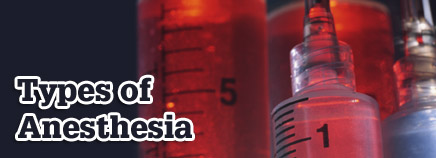
If your child is having surgery or a procedure, it can help to understand how the various types of anesthesia make the experience more comfortable.
Anesthesia is broken down into three main categories: general, regional, and local, all of which affect the nervous system in some way and can be administered using various methods and different medications.
Think of the brain as a central computer that controls all the body’s functions and the nervous system as a network that relays messages back and forth from the brain to different parts of the body. It does this via the spinal cord, which runs from the brain down through the backbone and contains threadlike nerves that branch out to every organ and body part.
Here’s a look at what each kind of anesthesia does.
General Anesthesia
The goal is to make and keep a person completely unconscious (or “asleep”) during the operation, with no awareness or memory of the surgery. General anesthesia can be given through an IV (which requires a needle stick into a vein, usually in the arm) or by inhaling gases or vapors delivered by a mask or breathing tube.
If your child is having general anesthesia, the anesthesiologist will be there before, during, and after the operation to monitor the anesthetic medications and ensure your child is constantly receiving the right dose.
With general anesthesia, the anesthesiologist uses a combination of various medications to:
- relieve anxiety
- keep your child asleep
- minimize pain during surgery and relieve pain afterward (using drugs called analgesics)
- relax the muscles, which helps to keep your child still
- block out the memory of the surgery
After surgery, the anesthesiologist reverses the anesthesia process to help your child “wake up.” It usually takes about 45 minutes to an hour for kids to recover from general anesthesia. This recovery period is monitored by specially trained nurses in the post-anesthesia care unit (PACU) or recovery room. During recovery, your child is still under the care of the anesthesiologist.
Regional Anesthesia
An anesthetic drug is injected near a cluster of nerves, numbing a larger area of the body (such as below the waist).
Most children who receive regional anesthesia are deeply sedated or asleep for the procedure. Rarely, older kids or those who might be at risk by being asleep may be awake or lightly sedated for this type of anesthesia.
In kids, regional and general anesthesia are often combined, except in very special circumstances. Regional anesthesia is generally used to make someone more comfortable during and after the surgical procedure.
If regional anesthesia is appropriate for your child, you’ll discuss this with the anesthesiologist. The time required to recover from the numbing effect will vary depending on the type of regional anesthetic used.
Local Anesthesia
An anesthetic drug (which can be given as a shot, spray, or ointment) numbs only a small, specific area of the body (for example, a foot, hand, or patch of skin). With local anesthesia, a person is awake or sedated, depending on what’s best for the patient.
Local anesthesia is often used for minor outpatient procedures (when patients come in for surgery and can go home that same day). If your child is having an outpatient surgery or procedure in a clinic or doctor’s office (such as the dentist or dermatologist), this is probably the type of anesthetic that will be used.
The medicine can numb the area during the procedure and for a short time afterward, helping to control discomfort after surgery. The numbing medicine may wear off in about 2-4 hours.
Will My Child Get a Needle?
Often, anesthesiologists may give children a sedative to help them feel sleepy or relaxed before a procedure or surgery. Then, kids who are getting general anesthesia may be given medication through a special breathing mask first and then be given an IV after they’re asleep. Why? Because many kids are afraid of needles and may have a hard time staying still and calm. By using a breathing mask, kids can just breathe themselves to sleep. This approach helps ease some anxiety about needles and the overall procedure or surgery.
What Type of Anesthesia Will My Child Get?
The type and amount of anesthesia given will be specifically tailored to your child’s needs and will depend on various factors, including:
- the type of surgery
- the location of the surgery
- how long the surgery may take
- your child’s current and previous medical condition
- any allergies your child may have
- previous reactions to anesthesia (in your child or family members)
- medications your child is taking
- your child’s age, height, and weight
In some cases, you may be able to request which type of anesthesia your child gets. The anesthesiologist can discuss the options available, but, ultimately, will make the decision based on your child’s individual needs and best interests.

